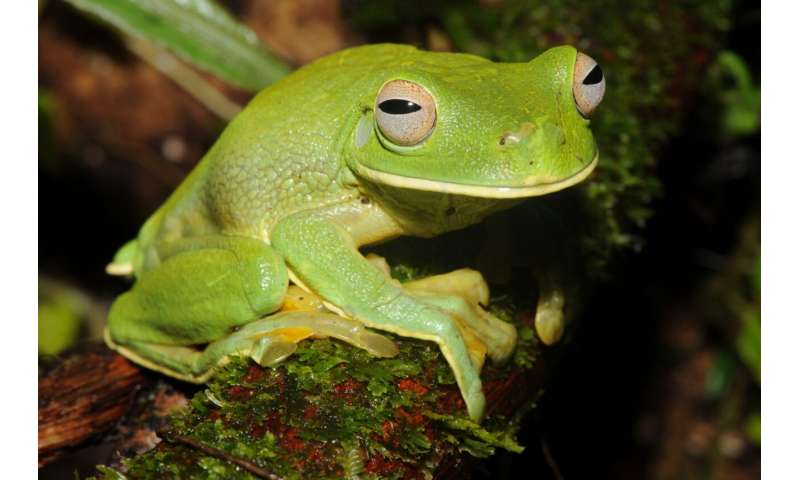Study highlights overlooked hotspot of frog diversity

In a recently published paper, a global team of scientists show that Melanesia, which is centered around New Guinea, is home to around 7% of the world's frogs in less than 1% of the world's land area.
"In the last 20 years scientists have described hundreds of new frogs from New Guinea," says lead author Dr. Paul Oliver, from Griffith's Center for Planetary Health and Food Security and Curator of Vertebrates at Queensland Museum.
"And there is no sign of discoveries slowing down—we estimate that there are likely to be over 700 frog species in the region, more the three times the number found in nearby Australia.
"New Guinea frogs show an amazing diversity of form and behavior—some of the world's smallest vertebrates, males with erectile noses, new species that glide through treetops using their webbed fingers, and even a species in which females are estimated to be 40 times heavier than the males."
New Guinea is the world's largest and highest tropical island.
A comprehensive conservation assessment shows that by world standards, New Guinea's frogs are in relatively good shape.
"Deadly pathogens that have devastated frog elsewhere are not currently know from New Guinea," said Dr. Deborah Bower from the University of New England, also an author on the paper.
"However, many species of frog in New Guinea have tiny distributions, this can make them very vulnerable to localized loss of forest.
"New Guinea is often considered a safe haven, but in many areas forest loss is occurring at high rate.
"We are particularly concerned about some newly documented hotspots of localized frog species, especially in the far east of New Guinea.
"Hopefully our growing awareness of this extraordinary natural wealth will enable and support locally driven conservation initiatives."
The study, "Melanesia holds the world's most diverse and intact insular amphibian fauna," has been published in Communications Biology.
More information:
Paul M. Oliver et al, Melanesia holds the world's most diverse and intact insular amphibian fauna, Communications Biology (2022). DOI: 10.1038/s42003-022-04105-1
Provided by Griffith University